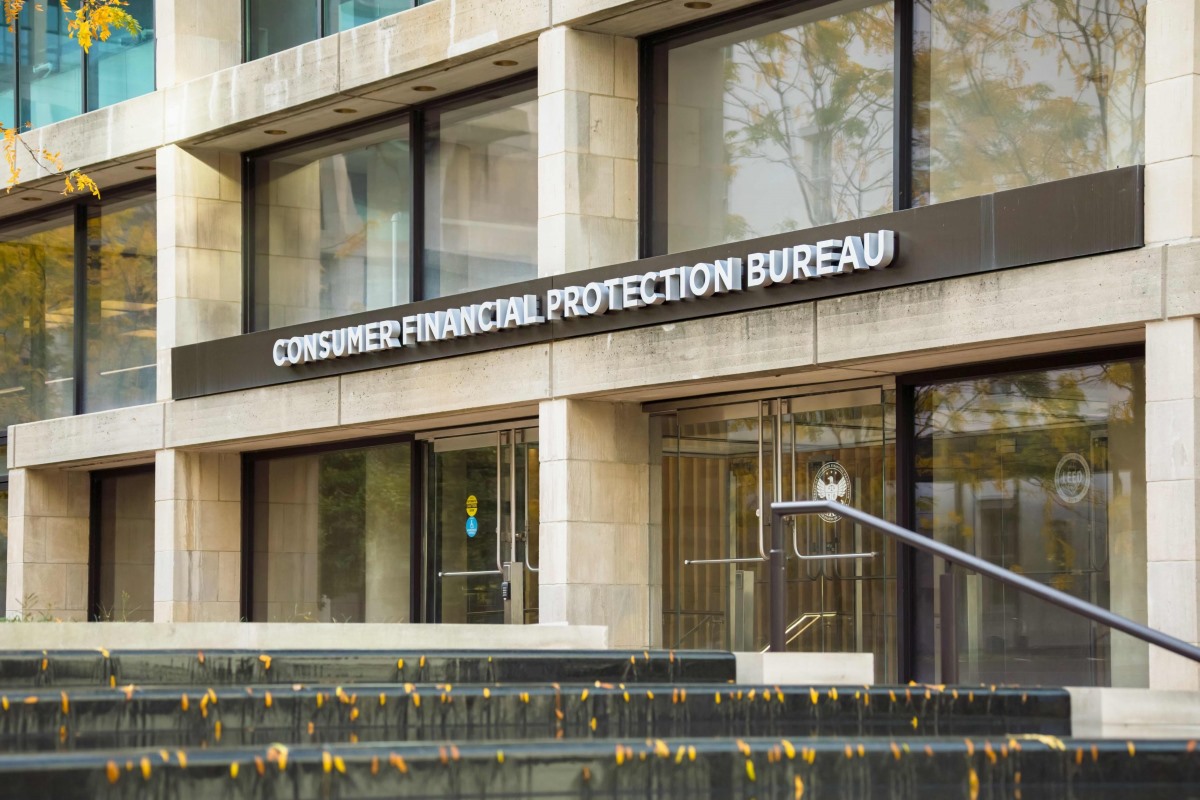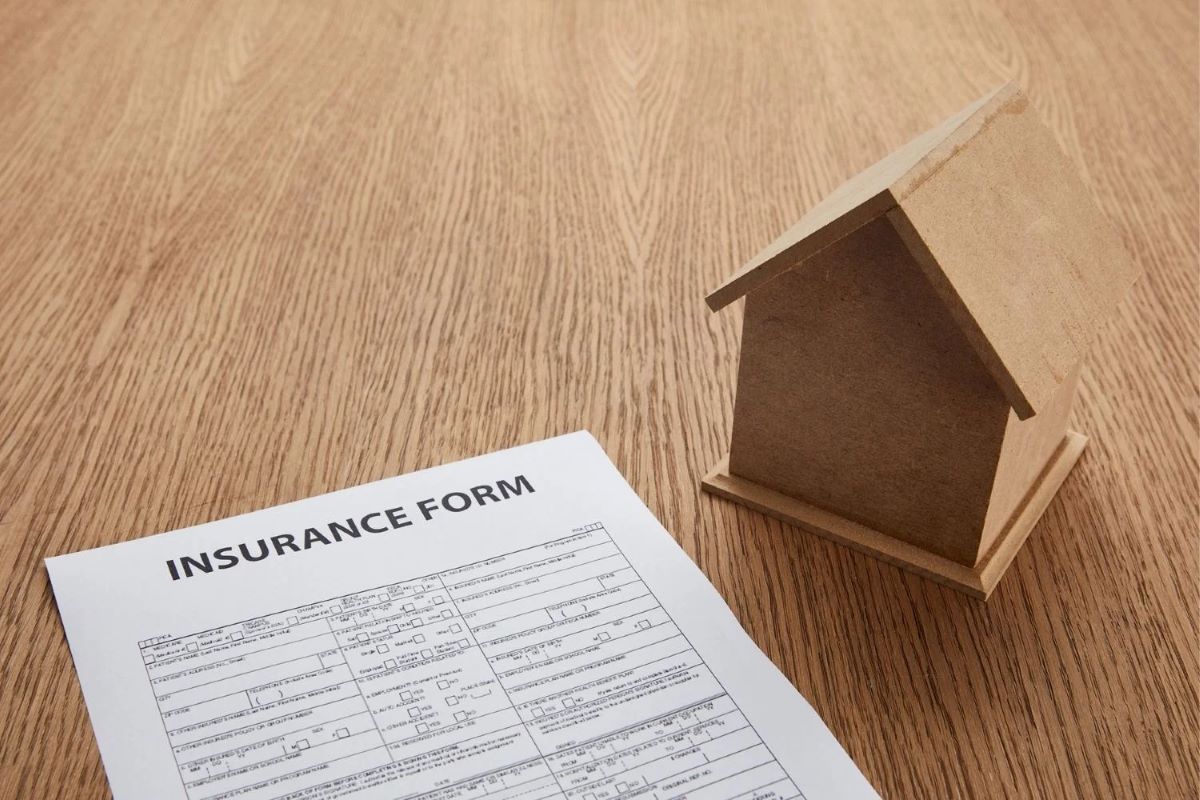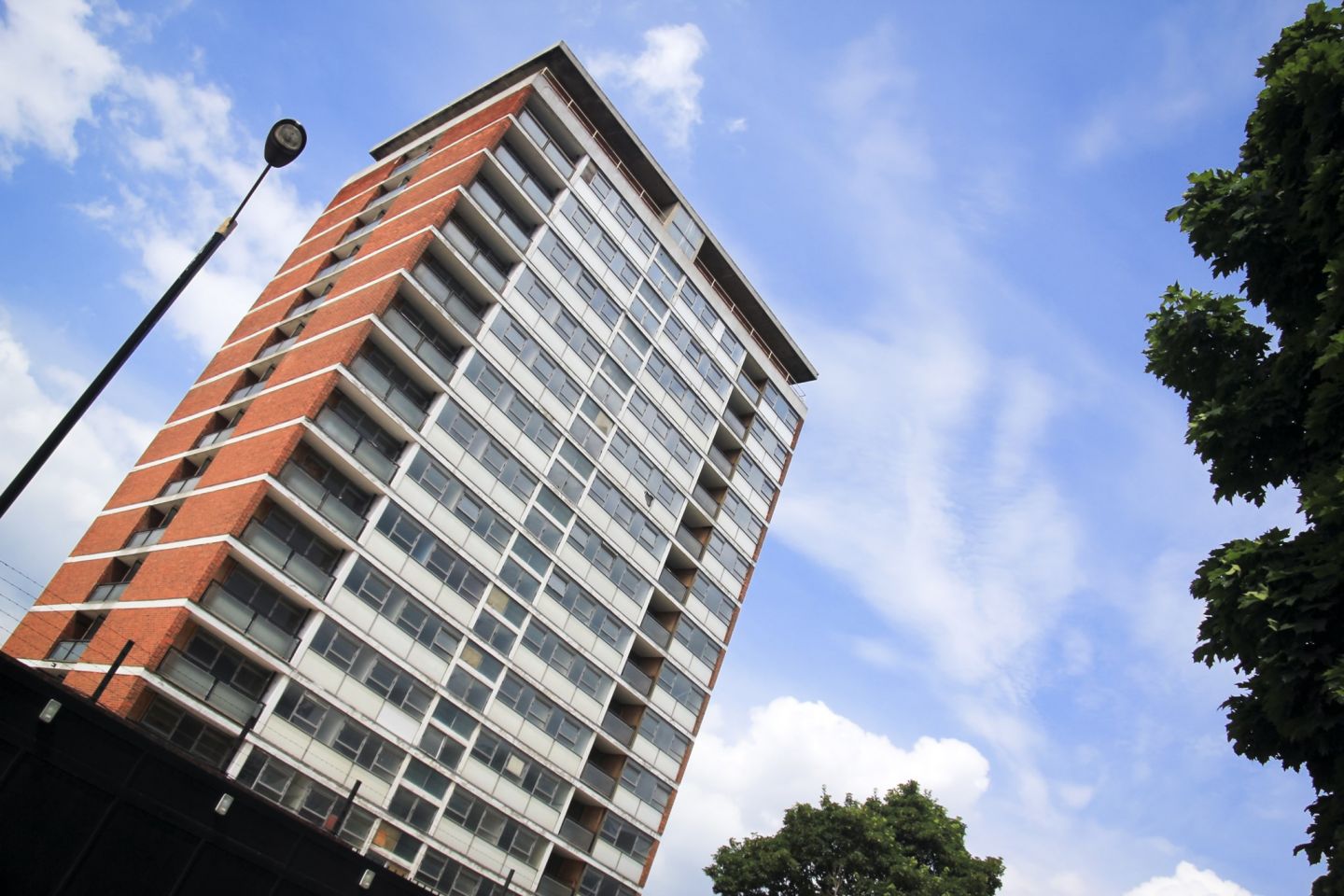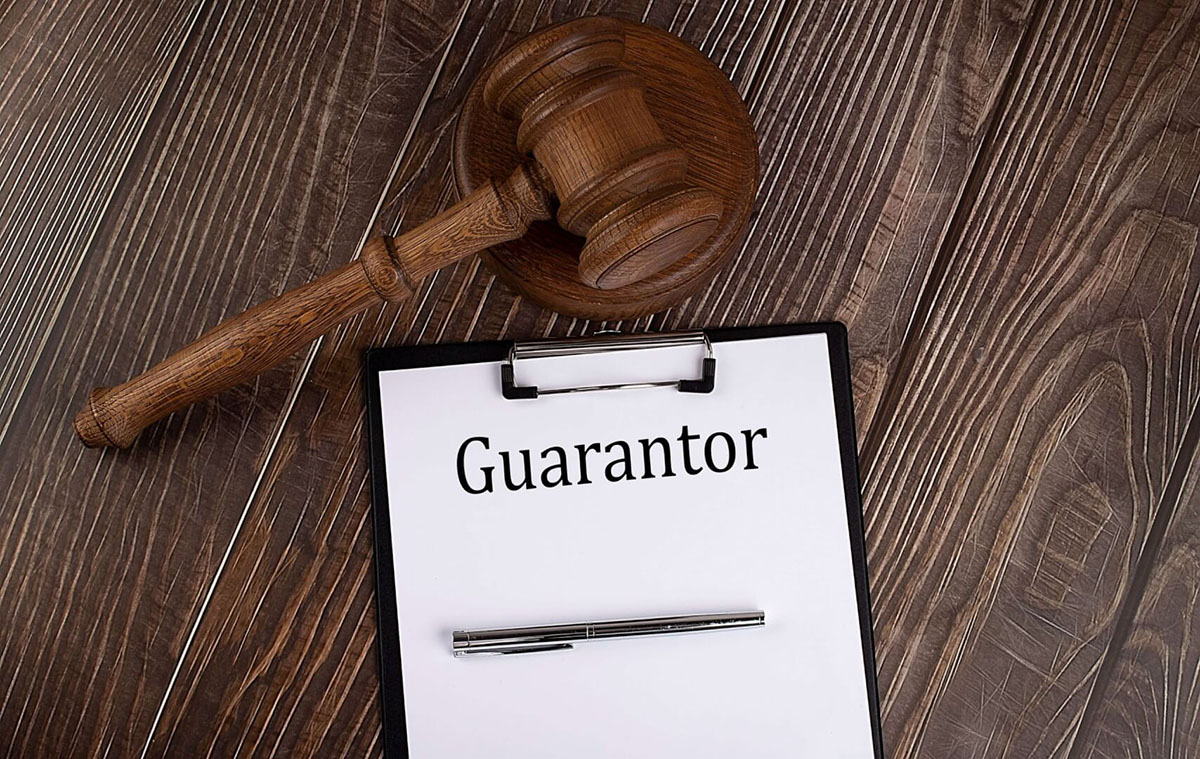Home>Finance>Who Is Responsible For Commercial Building? Insurance Landlord Or Tenant?


Finance
Who Is Responsible For Commercial Building? Insurance Landlord Or Tenant?
Published: November 28, 2023
Determining who is responsible for commercial building insurance, whether it's the landlord or the tenant, is a crucial finance decision. Find out more about this important topic.
(Many of the links in this article redirect to a specific reviewed product. Your purchase of these products through affiliate links helps to generate commission for LiveWell, at no extra cost. Learn more)
Table of Contents
Introduction
When it comes to commercial buildings, insurance plays a crucial role in protecting both the landlord and the tenant from potential risks and liabilities. However, there can sometimes be confusion about who is responsible for obtaining and maintaining the necessary insurance coverage. Is it the landlord or the tenant?
In this article, we will delve into the world of commercial building insurance and explore the respective responsibilities of both the landlord and the tenant. By understanding these roles, you can ensure that your business is adequately protected and minimize the potential for disputes.
Commercial building insurance is designed to provide coverage for various risks that may arise in relation to a commercial property. This can include damage to the building itself, liability for injuries that occur on the premises, and coverage for business interruptions due to unforeseen events like natural disasters or vandalism.
Typically, the landlord is responsible for obtaining a basic commercial property insurance policy that covers the structure, common areas, and any liability risks associated with the building. This coverage protects the landlord’s investment in the property and ensures that they are financially protected against potential damages and lawsuits.
Understanding Commercial Building Insurance
Commercial building insurance, also known as commercial property insurance, is a type of insurance coverage specifically designed for commercial properties such as office buildings, retail spaces, warehouses, and industrial facilities. It provides financial protection and coverage in the event of various risks and perils that may affect the property.
Commercial building insurance policies typically cover the physical structure of the building, including the walls, roof, flooring, and fixtures. Additionally, it may also include coverage for any improvements or renovations made to the property. This ensures that in the event of damage or destruction, the landlord or property owner can receive compensation to repair or rebuild the property.
Moreover, commercial building insurance also offers liability coverage, which protects the landlord from potential lawsuits filed by third parties who suffered injuries or property damage on the premises. For example, if a customer slips and falls in a commercial building and sustains injuries, the liability coverage can help cover the medical expenses and any additional legal costs.
It is important to note that commercial building insurance does not usually cover the contents inside the building, such as inventory, equipment, or personal belongings. These items are typically covered under separate policies, such as business personal property insurance or tenant insurance, depending on whether the tenant or the landlord owns them.
Understanding the specific terms and coverage of a commercial building insurance policy is essential. Different policies may have specific exclusions or limitations based on the type of property, location, and associated risks. It is crucial for both landlords and tenants to carefully review and understand the details of the insurance policy to ensure proper coverage.
In the next sections, we will outline the key responsibilities of both the landlord and the tenant when it comes to commercial building insurance. By understanding these roles, it will be easier to determine who is responsible for what and avoid potential disputes or gaps in coverage.
Responsibilities of the Landlord
The landlord holds significant responsibilities when it comes to commercial building insurance. As the owner of the property, it is their responsibility to obtain and maintain adequate insurance coverage to protect the building and themselves from potential risks and liabilities.
Here are some of the key responsibilities of the landlord in relation to commercial building insurance:
- Purchasing a Commercial Property Insurance Policy: It is the landlord’s responsibility to obtain a commercial property insurance policy that covers the physical structure, common areas, and liability risks associated with the building. This policy should provide coverage for risks such as fire, theft, vandalism, and natural disasters.
- Ensuring Adequate Coverage: The landlord should ensure that the insurance policy provides adequate coverage for the value of the building and any improvements or renovations made to it. They should regularly review and update the policy to reflect any changes in the property’s value or construction.
- Complying with Insurance Requirements: Some landlords may have specific insurance requirements for their tenants. This could include requesting that tenants carry their own general liability insurance or business personal property insurance to cover their belongings. It is the landlord’s responsibility to communicate these requirements to the tenants and ensure compliance.
- Paying Insurance Premiums: The landlord is responsible for paying the premiums associated with the commercial building insurance policy. This cost is typically factored into the overall expenses of owning and managing the property.
- Managing Claims: In the event of an insurance claim, the landlord is responsible for managing the process and ensuring that any necessary repairs or replacements are carried out. They should work closely with the insurance company to expedite the claims process and restore the property as quickly as possible.
By fulfilling these responsibilities, the landlord can protect their investment in the property and mitigate potential financial and legal risks. However, it is important to note that the landlord’s insurance policy typically does not cover the tenant’s personal belongings or liability. The tenant may need to obtain their own insurance to address these specific concerns, as we will explore in the next section.
Responsibilities of the Tenant
The tenant also has certain responsibilities when it comes to commercial building insurance. While the landlord is responsible for insuring the physical structure and common areas, the tenant is typically responsible for insuring their own business operations, personal belongings, and liabilities.
Here are some of the key responsibilities of the tenant in relation to commercial building insurance:
- Obtaining Tenant Insurance: It is the tenant’s responsibility to obtain their own insurance policy known as tenant insurance or business insurance. This policy provides coverage for the tenant’s business operations, including inventory, equipment, and furniture, against risks like fire, theft, and natural disasters. It may also include liability coverage for any accidents or damages that occur within the tenant’s premises.
- Meeting Landlord’s Insurance Requirements: Some landlords may have specific insurance requirements for their tenants, such as carrying general liability insurance or naming the landlord as an additional insured on the tenant’s policy. It is the tenant’s responsibility to review the lease agreement and adhere to these insurance requirements.
- Communicating with the Landlord: Tenants should communicate with their landlord regarding their insurance coverage and provide proof of insurance as required. Regular communication ensures that both parties are aware of the insurance responsibilities and can address any potential gaps or overlaps in coverage.
- Managing Claims: In the event of an insurance claim, the tenant is responsible for managing the process and initiating any necessary claims for their business operations or personal belongings. They should promptly report any damages or losses to their insurance provider and provide the necessary documentation to support their claim.
- Reviewing and Updating Coverage: Tenants should regularly review their insurance policy to ensure that it provides adequate coverage for their business needs. If there are any changes in the business operations, such as expansion or addition of new equipment, the tenant should update their insurance coverage accordingly.
By fulfilling these responsibilities, the tenant can protect their business assets, mitigate potential risks, and ensure compliance with the lease agreement. It is crucial for tenants to understand their insurance obligations and obtain the appropriate coverage to safeguard their business operations.
When both the landlord and the tenant fulfill their respective insurance responsibilities, it creates a comprehensive framework of protection for both parties and minimizes the potential for disputes in case of unfortunate events.
Determining Insurance Coverage
When it comes to determining the insurance coverage for a commercial building, both the landlord and the tenant need to carefully consider their specific needs and responsibilities. This involves understanding the risks associated with the property and evaluating the appropriate types and amounts of insurance coverage required.
For the landlord, the primary focus is on insuring the physical structure of the building, as well as any liability risks that may arise from ownership and maintenance. They should consider obtaining a commercial property insurance policy that covers standard perils like fire, theft, vandalism, and natural disasters. Additionally, liability coverage should be included to protect against claims made by third parties who suffer injuries or property damage on the premises.
Tenants, on the other hand, should assess their business operations and determine the coverage needed to protect their assets and liabilities. This may include obtaining tenant insurance or business insurance, which can cover the contents of their business, such as inventory, equipment, and furniture. Liability coverage should also be considered to protect against claims related to accidents or damages that occur within the tenant’s space.
It is essential for both landlords and tenants to review their lease agreements carefully to understand the insurance requirements and limitations outlined. The lease may specify the types of insurance coverage required, the coverage limits, and whether the landlord needs to be named as an additional insured on the tenant’s policy.
In some cases, landlords and tenants may choose to collaborate and share the insurance coverage. This can be done through a co-insurance agreement, where both parties contribute to a single insurance policy that covers the building and the tenant’s business operations. This approach is beneficial as it ensures there are no gaps in coverage and can potentially reduce costs for both parties.
It is crucial to keep in mind that insurance needs may evolve over time. As the building undergoes renovations or upgrades, or as the tenant’s business expands, the insurance coverage should be regularly reviewed and adjusted to ensure adequate protection.
Consulting with an insurance professional who specializes in commercial insurance can be helpful in determining the specific insurance needs for both landlords and tenants. They can assess the unique risks associated with the property and provide guidance on the appropriate types and levels of coverage required.
By taking a proactive approach to determining insurance coverage, both landlords and tenants can ensure that their interests are protected, and they are adequately prepared for any unforeseen events that may arise.
Common Insurance Issues and Disputes
Insurance issues and disputes can arise between landlords and tenants in the context of commercial building insurance. These conflicts can result from a lack of clarity in the lease agreement, differences in interpretation of insurance requirements, or disagreements about responsibility for damages or liabilities.
Here are some of the common insurance issues and disputes that may arise:
- Insurance Coverage Gaps: One of the most common issues is when there are coverage gaps between the landlord’s insurance policy and the tenant’s insurance policy. This can occur when there is ambiguity in the lease agreement regarding the extent of coverage required by each party. It is crucial for both parties to clearly define their insurance obligations to avoid potential gaps in coverage.
- Disputes over Liability: There can be disputes over who is responsible for specific liabilities. For example, if a customer slips and falls in the common area of a commercial building, both the landlord and the tenant may be held liable. It is essential to clearly outline the liability responsibilities in the lease agreement and ensure that the appropriate parties are named as additional insured on the insurance policies.
- Insurance Claim Denials: Sometimes insurance claims may be denied by the insurance company, leaving both the landlord and the tenant in a challenging situation. This can occur if the claim is not covered under the policy or if there are discrepancies in the documentation provided. It is important to understand the terms and conditions of the insurance policies and provide thorough documentation when filing a claim.
- Disagreements over Coverage Limits: There can be disagreements regarding the adequate coverage limits required for the building or the tenant’s business. The landlord may insist on a higher coverage limit to protect their investment, while the tenant may consider a lower limit to minimize costs. Finding a common ground that satisfies both parties’ interests may require open communication and negotiation.
- Subrogation Claims: Subrogation refers to the right of an insurance company to seek reimbursement from a responsible party after paying out a claim. In some cases, insurance companies may pursue subrogation claims against the landlord or tenant, leading to potential legal disputes. Understanding the subrogation clauses in the insurance policies can help prevent these conflicts or alleviate the financial burden.
To mitigate these common insurance issues and disputes, it is crucial for landlords and tenants to communicate effectively and have a clear understanding of their insurance responsibilities. This can be achieved by thoroughly reviewing the lease agreement, seeking professional advice when necessary, and maintaining open lines of communication throughout the lease term.
In cases where disputes cannot be resolved directly, seeking mediation or legal assistance may be necessary. These professionals can help facilitate discussions between the parties and find equitable solutions that protect both the landlord and the tenant’s interests.
By addressing potential insurance issues proactively and finding mutually beneficial solutions, landlords and tenants can minimize disputes, maintain positive relationships, and ensure comprehensive insurance coverage for their commercial building.
Collaborating Between the Landlord and Tenant
Collaboration between the landlord and tenant is crucial when it comes to commercial building insurance. By working together, both parties can ensure that their insurance needs are met, potential gaps in coverage are addressed, and any disputes are resolved amicably. Here are some ways that landlords and tenants can collaborate effectively:
- Open Communication: Establishing open lines of communication is vital for both landlords and tenants. Regularly discussing insurance matters, sharing policy information, and addressing any concerns or questions can help prevent misunderstandings and resolve issues promptly.
- Reviewing Lease Agreements: Both parties should carefully review the lease agreement to ensure that the insurance requirements are accurately outlined. Any uncertainties or ambiguities should be clarified to avoid potential conflicts. It is also important to review and update the lease agreement as necessary to reflect any changes in insurance needs or coverage.
- Sharing Insurance Policy Information: Landlords and tenants should share information about their respective insurance policies, including policy numbers, coverage limits, and contact details for insurance providers. This transparency allows both parties to verify the existence and adequacy of insurance coverage as required by the lease agreement.
- Insurance Policy Reviews: Regularly reviewing insurance policies can help identify any gaps in coverage or changes in insurance needs. Landlords and tenants should collaborate and discuss any updates or modifications required to ensure that the coverage adequately protects both parties’ interests.
- Coordinating Inspections and Maintenance: Collaborating on property inspections and maintenance activities can help minimize risks and maintain the integrity of the building. Coordinating regular inspections for safety hazards, addressing maintenance issues promptly, and documenting these efforts can contribute to a safer environment and reduce the likelihood of insurance claims.
- Addressing Claims Together: In the event of an insurance claim, landlords and tenants should work together to streamline the claims process and ensure that all necessary documentation is provided. Promptly reporting the claim, cooperating with the insurance company, and keeping each other informed can help expedite the claims settlement.
By fostering a collaborative relationship, landlords and tenants can create a harmonious insurance environment that benefits both parties. Through open communication, shared responsibilities, and proactive measures, potential disputes and gaps in insurance coverage can be effectively addressed.
It is also advisable to consult with insurance professionals who specialize in commercial building insurance. They can provide expert advice, evaluate insurance needs, and offer solutions tailored to the specific requirements of the landlord and tenant.
Ultimately, collaboration between the landlord and tenant in matters of insurance can lead to a stronger partnership, better risk management, and a greater sense of security for both parties involved.
Conclusion
Commercial building insurance is a critical component in protecting both landlords and tenants from potential risks and liabilities. Understanding the responsibilities of each party is essential to ensure adequate coverage and minimize disputes.
Landlords hold the primary responsibility for obtaining and maintaining insurance coverage for the physical structure of the building and any liability risks associated with it. Tenants, on the other hand, are generally responsible for insuring their business operations, personal belongings, and liabilities.
Determining the appropriate insurance coverage requires careful consideration of the specific risks and needs of the property. It is important for both landlords and tenants to review lease agreements, communicate openly, and collaborate in addressing potential insurance issues and disputes.
Common insurance issues and disputes can arise from coverage gaps, disagreements over liability, claim denials, disputes about coverage limits, and subrogation claims. Resolving these issues often requires effective communication, understanding one another’s obligations, and seeking professional guidance when necessary.
By collaborating proactively, both landlords and tenants can ensure comprehensive insurance coverage, mitigate risks, and maintain positive relationships. Open communication, sharing insurance policy information, reviewing policies regularly, and coordinating maintenance activities can contribute to a harmonious insurance environment.
In conclusion, a strong partnership between the landlord and tenant is vital in addressing commercial building insurance matters. By fulfilling their respective responsibilities and working together, both parties can protect their interests, minimize disputes, and create a secure environment for their businesses to thrive.














